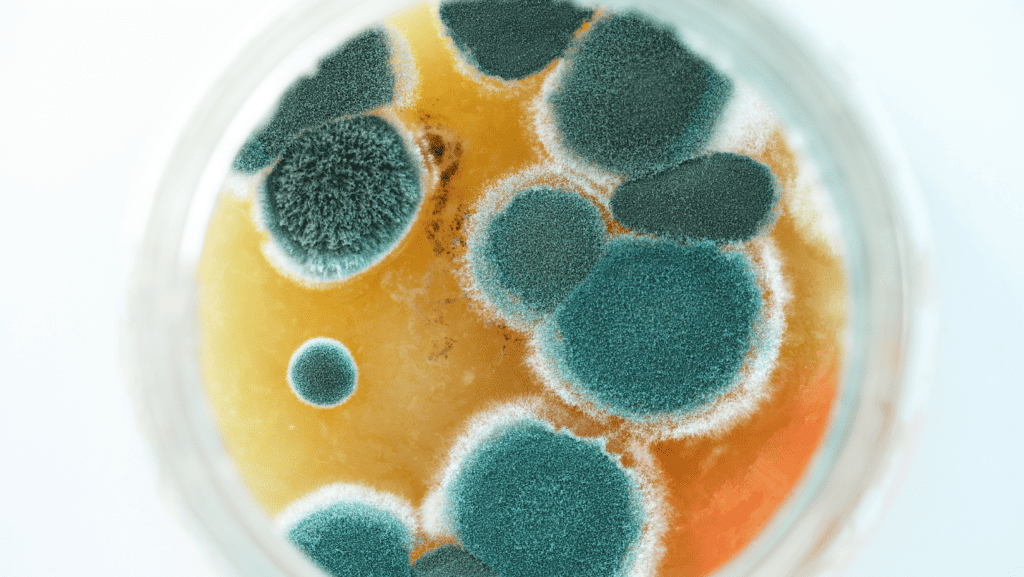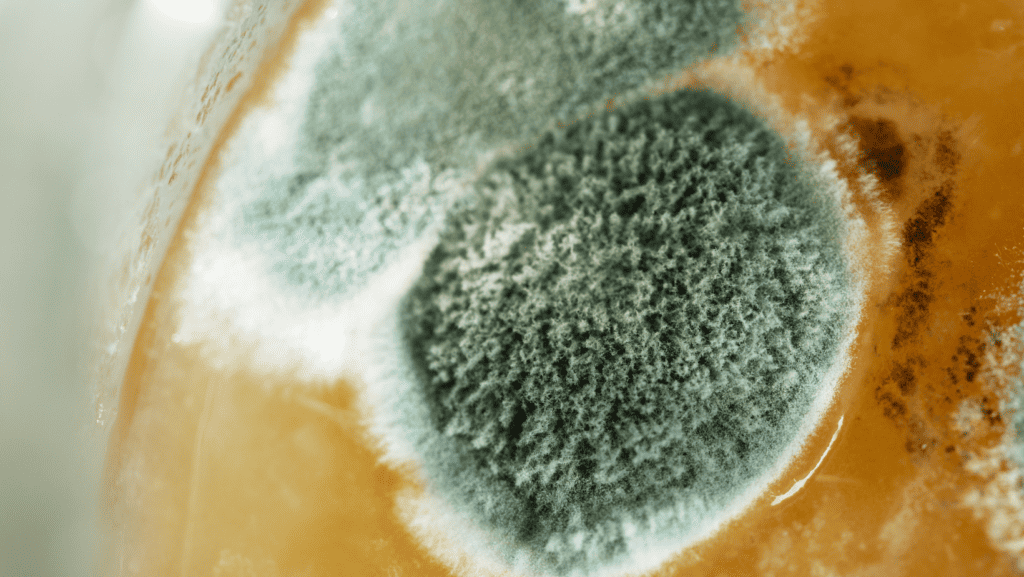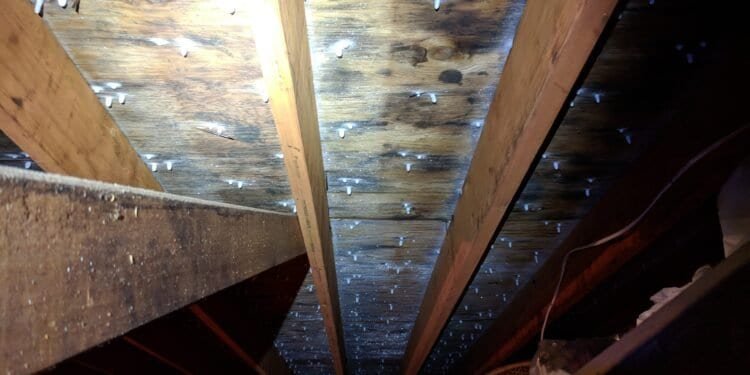Mold is a common problem in many households, and it can cause serious health risks if not addressed promptly. Understanding mold types and health risks is essential to prevent mold growth, minimize health risks, and protect your home and family. This ultimate guide will provide you with everything you need to know about mold, from the different types of mold to the health risks associated with mold exposure.

Mold is a type of fungus that grows in warm, humid, and damp environments. It can grow on almost any surface, including walls, ceilings, floors, carpets, and furniture. Mold spores can cause allergic reactions, respiratory problems, and other health issues, especially in people with weakened immune systems. This guide will cover the most common types of mold, including their appearance, growth conditions, and health risks. It will also provide tips on how to prevent and control mold growth, as well as information on mold inspection, testing, and remediation.
Key Takeaways
- Understanding the different types of mold and their growth conditions is essential to prevent mold growth and minimize health risks.
- Mold exposure can cause allergic reactions, respiratory problems, and other health issues, especially in people with weakened immune systems.
- Preventing and controlling mold growth, as well as addressing mold problems promptly, can help protect your home and family from the harmful effects of mold.
Types of Mold

Mold is a type of fungus that grows in damp and humid environments. There are many different types of mold, each with its own unique characteristics and health risks. In this section, we will discuss the three main types of mold: allergenic, pathogenic, and toxigenic molds.
Allergenic Molds
Allergenic molds are the most common type of mold found in homes. They produce allergens that can cause allergic reactions in sensitive individuals. Some common allergenic molds include Alternaria, Aspergillus, Cladosporium, and Penicillium.
Allergic reactions to mold can vary depending on the individual and the type of mold present. Symptoms may include sneezing, runny nose, itchy eyes, and skin rash. In some cases, exposure to allergenic molds can also trigger asthma symptoms.
Pathogenic Molds
Pathogenic molds are less common than allergenic molds, but they can still pose a risk to human health. These molds can cause infections in people with weakened immune systems, such as those undergoing chemotherapy or with HIV/AIDS.
Some common pathogenic molds include Aspergillus fumigatus, Aspergillus flavus, and Aspergillus niger. These molds can cause a range of health problems, including respiratory infections, skin infections, and even systemic infections.
Toxigenic Molds
Toxigenic molds are the most dangerous type of mold. They produce mycotoxins, which can be harmful to human health. Some common toxigenic molds include Stachybotrys chartarum (also known as black mold), Fusarium, and Trichoderma.
Exposure to toxigenic molds can cause a range of health problems, including respiratory problems, skin irritation, and even neurological problems. In severe cases, exposure to these molds can be fatal.
It is important to note that not all molds are harmful to human health. However, any mold growth in the home should be addressed promptly to prevent further growth and potential health risks.
Common Indoor Molds

Mold is a type of fungus that grows in damp and humid environments. It can cause health problems, such as allergies, asthma, and other respiratory issues. There are many different types of mold that can grow indoors, but some are more common than others. In this section, we will discuss some of the most common indoor molds.
Aspergillus
Aspergillus is a type of mold that is commonly found indoors. It can grow on a variety of surfaces, including walls, floors, and ceilings. Aspergillus can cause health problems, particularly for people with weakened immune systems. It can cause allergic reactions, lung infections, and other respiratory issues.
Cladosporium
Cladosporium is another common indoor mold. It can grow on many different surfaces, including wood, carpet, and insulation. Cladosporium can cause health problems, particularly for people with allergies or asthma. It can cause allergic reactions, respiratory issues, and other health problems.
Penicillium
Penicillium is a type of mold that is commonly found indoors. It can grow on many different surfaces, including walls, ceilings, and floors. Penicillium can cause health problems, particularly for people with allergies or asthma. It can cause allergic reactions, respiratory issues, and other health problems.
Stachybotrys Chartarum
Stachybotrys Chartarum, also known as black mold, is a type of mold that is commonly found in damp and humid environments. It can grow on many different surfaces, including walls, floors, and ceilings. Stachybotrys Chartarum can cause health problems, particularly for people with weakened immune systems. It can cause allergic reactions, lung infections, and other respiratory issues.
It is important to note that there are many other types of mold that can grow indoors, and each can cause different health problems. If you suspect that you have mold in your home, it is important to have it removed as soon as possible to prevent health problems.
Health Risks Associated with Mold

Mold can pose significant health risks to individuals who are exposed to it. The severity of the health risks depends on the type of mold, the amount of mold present, and the individual’s sensitivity to mold. In this section, we will discuss the most common health risks associated with mold.
Respiratory Issues
Exposure to mold can cause respiratory issues, especially in individuals with pre-existing conditions such as asthma or chronic obstructive pulmonary disease (COPD). According to the National Institute of Environmental Health Sciences, mold exposure can worsen asthma symptoms, especially among young children. Mold can also cause respiratory infections, including bronchitis and pneumonia.
Allergic Reactions
Mold can trigger allergic reactions in individuals who are sensitive to it. According to the U.S. Environmental Protection Agency, mold exposure can irritate the eyes, skin, nose, throat, and lungs of both mold-allergic and non-allergic people. Symptoms of mold allergies include sneezing, runny nose, itchy eyes, and skin rashes.
Mycotoxin Exposure
Some types of mold produce mycotoxins, which are toxic substances that can cause a variety of health problems. According to Mold Busters, mycotoxins can cause neurological problems, respiratory problems, and skin irritation. Ingesting mycotoxins can also cause gastrointestinal problems, including vomiting and diarrhea.
It is important to note that not all types of mold produce mycotoxins, and not all individuals are sensitive to mold. However, it is important to take mold growth seriously and address it promptly to minimize the risk of health problems.
Mold Growth Conditions

Mold growth is a common problem in homes and buildings. It can grow on almost any surface, especially in areas with high humidity and moisture. Understanding the conditions that promote mold growth is essential to preventing it from spreading and causing health risks.
Moisture and Humidity
Mold requires moisture to grow and thrive. It can grow on any surface that is wet or damp for an extended period. Leaking pipes, roofs, and windows are common sources of moisture that can lead to mold growth. High humidity levels also promote mold growth. Keeping indoor humidity levels below 60% can help prevent mold growth.
Temperature and Light
Mold can grow in a wide range of temperatures, but it thrives in warm and humid conditions. The ideal temperature for mold growth is between 77°F and 86°F. Mold can also grow in areas with low light, making it difficult to detect.
Organic Materials
Mold can grow on almost any organic material, including wood, paper, and fabrics. It can also grow on inorganic materials such as concrete and metal if they are coated with organic materials like dust or dirt. Removing organic materials like food debris, dust, and dirt can help prevent mold growth.
Preventing mold growth requires controlling moisture levels, reducing humidity, and keeping surfaces clean and dry. Regularly inspecting and maintaining areas prone to moisture and humidity, such as bathrooms and kitchens, can help prevent mold growth. If mold growth is detected, it is essential to remove it promptly to prevent health risks.
Prevention and Control of Mold
Mold prevention and control are important to maintain a healthy indoor environment. Mold can cause various health problems, including respiratory issues, allergies, and infections. In this section, we will discuss some effective ways to prevent and control mold growth.
Ventilation and Humidity Control
Controlling indoor humidity levels is crucial to preventing mold growth. The ideal indoor humidity level is between 30% and 50%. A dehumidifier can help to reduce indoor humidity levels. Additionally, proper ventilation is important to keep indoor air circulating and prevent moisture buildup. Opening windows and doors, using exhaust fans, and installing ventilation systems are effective ways to improve air circulation.
Regular Cleaning
Regular cleaning is essential to prevent mold growth. It is important to clean up any spills or leaks immediately to prevent moisture buildup. Additionally, regular cleaning of surfaces such as walls, floors, and ceilings can help to prevent mold growth. Using a HEPA filter vacuum cleaner can help to remove mold spores from the air.
Mold-Resistant Materials
Using mold-resistant materials can help to prevent mold growth. Some examples of mold-resistant materials include mold-resistant drywall, paint, and insulation. These materials are designed to resist moisture and prevent mold growth.
In conclusion, preventing and controlling mold growth is essential to maintain a healthy indoor environment. Ventilation and humidity control, regular cleaning, and using mold-resistant materials are effective ways to prevent mold growth.
Mold Inspection and Testing
Mold inspection and testing are essential to determine the presence of mold in a building and the type of mold present. Professional mold assessment is recommended, but DIY mold testing kits are also available.
Professional Mold Assessment
Professional mold assessment involves hiring a certified mold inspector who will conduct a visual inspection of the property to look for signs of mold growth. They may also use specialized equipment to detect mold in hidden areas such as behind walls or under carpets. The inspector will take samples of any visible mold and send them to a laboratory for analysis to determine the type of mold present.
The cost of professional mold assessment varies depending on the size of the property and the extent of the mold growth. However, it is worth the investment as it provides accurate results and ensures that all mold is detected.
DIY Mold Testing Kits
DIY mold testing kits are available for homeowners who want to test for mold themselves. These kits typically include a petri dish and a swab for collecting a sample of the mold. The sample is then sent to a laboratory for analysis to determine the type of mold present.
While DIY mold testing kits are affordable, they may not provide accurate results as the samples may not be collected correctly. Additionally, they may not detect mold in hidden areas, which can lead to a false negative result.
It is important to note that regardless of the method used, mold testing should only be done if there are visible signs of mold or if there is a musty odor in the building. Testing for mold when there are no visible signs can lead to unnecessary expenses and may not provide accurate results.
Mold Remediation
Mold remediation is the process of identifying, removing, and preventing mold growth in indoor spaces. Mold can thrive in damp, dark environments, and if left untreated, it can cause structural damage to your property and pose health risks to occupants.
Removal and Cleanup Procedures
The first step in mold remediation involves a thorough inspection to identify the extent of mold growth and the underlying moisture problem causing it. This assessment guides professionals in selecting the most appropriate remediation methods and equipment. Bleach and dish detergent, common household items, can be used to clean mold in your home after a storm. The steps to take to clean up mold will depend on how much water damage your home suffered.
It’s important to note that not all molds are toxic, and not all mold problems require professional remediation. However, if the mold covers a large area, has penetrated porous materials, or poses a health risk, it’s best to call in a professional remediation service.
Professional Remediation Services
Professional mold remediation services are equipped with the necessary tools and expertise to identify and eliminate mold problems. They use specialized equipment to detect mold growth and moisture levels in the air and on surfaces.
They also have the knowledge and experience to determine the best course of action for removing the mold, whether it’s through physical removal or chemical treatments. After the mold is removed, they will take steps to prevent future mold growth by addressing the underlying moisture problem and providing recommendations for ongoing maintenance.
Overall, mold remediation is a critical process for maintaining a healthy indoor environment. By taking the necessary steps to identify and eliminate mold problems, you can ensure the safety and well-being of your family and property.
Legal and Insurance Considerations
Landlord and Tenant Responsibilities
Landlords and tenants have different responsibilities when it comes to mold in rental properties. Landlords are responsible for maintaining the property, which includes keeping it free from mold. Tenants, on the other hand, are responsible for keeping the property clean and reporting any leaks or water damage to the landlord as soon as possible.
If mold is discovered in a rental property, it is important to determine who is responsible for cleaning it up. In some cases, the landlord may be responsible, while in other cases, the tenant may be responsible. It is important to check the lease agreement to determine who is responsible for mold remediation.
Insurance Coverage for Mold Damage
Mold damage can be costly to repair, and it is important to understand what your insurance policy covers. Most standard homeowners insurance policies do not cover mold damage. However, some policies may provide coverage for mold damage if it is caused by a covered peril, such as a burst pipe or a roof leak.
It is important to review your insurance policy carefully to determine what is covered and what is not covered. If you are unsure about your coverage, it may be a good idea to speak with your insurance agent to get more information.
In some cases, it may be necessary to purchase additional insurance coverage to protect against mold damage. This may include a separate mold insurance policy or an endorsement to your existing homeowners insurance policy.
It is important to note that insurance companies may have different policies when it comes to mold damage, and it is important to shop around to find the best coverage for your needs.
Frequently Asked Questions
What are the 5 most toxic molds and their associated health risks?
Molds are fungi that can exist indoors and outdoors, and can grow on almost any surface that has moisture. Some molds can produce toxins called mycotoxins, which can cause health problems in humans. The five most toxic molds are Stachybotrys, Aspergillus, Penicillium, Fusarium, and Chaetomium. Stachybotrys is the most dangerous of the five, as it produces a mycotoxin known as satratoxin, which can cause serious health problems such as respiratory issues, fatigue, and depression.
How can you identify the 10 warning signs of mold toxicity?
Mold toxicity can cause a variety of symptoms, including respiratory issues, skin irritation, fatigue, and headaches. The 10 warning signs of mold toxicity include coughing, sneezing, wheezing, shortness of breath, sore throat, runny nose, itchy eyes, skin rashes, headaches, and fatigue. If you experience any of these symptoms, it is important to seek medical attention and investigate the presence of mold in your environment.
What are the recommended EPA guidelines for mold remediation?
The Environmental Protection Agency (EPA) recommends that mold remediation should be conducted by professionals who are trained in handling mold safely and effectively. The EPA also recommends that any mold growth larger than 10 square feet should be handled by professionals. The guidelines for mold remediation include identifying the source of the moisture, containing the area to prevent the spread of mold spores, removing the mold and contaminated materials, and ensuring that the area is thoroughly dried and ventilated.
How can you effectively kill mold spores in the air naturally?
There are several natural ways to kill mold spores in the air, including using essential oils such as tea tree oil, eucalyptus oil, and lavender oil. These oils have antifungal properties that can help kill mold spores. Other natural methods include using vinegar, hydrogen peroxide, and baking soda to clean and disinfect surfaces that may have mold growth.
What should you do if you suspect mold presence in your house?
If you suspect the presence of mold in your house, it is important to take action immediately. The first step is to identify the source of the moisture that is causing the mold growth and fix the problem. If the mold growth is larger than 10 square feet, it is recommended to seek professional help for mold remediation. If the mold growth is smaller, you can try to clean it yourself using natural methods or by using a commercial mold cleaner.
Is there a correlation between mold exposure and neurological symptoms?
Studies have shown that there may be a correlation between mold exposure and neurological symptoms such as headaches, dizziness, and memory loss. However, more research is needed to fully understand the link between mold exposure and neurological symptoms. If you experience any neurological symptoms and suspect mold exposure, it is important to seek medical attention and investigate the presence of mold in your environment.














